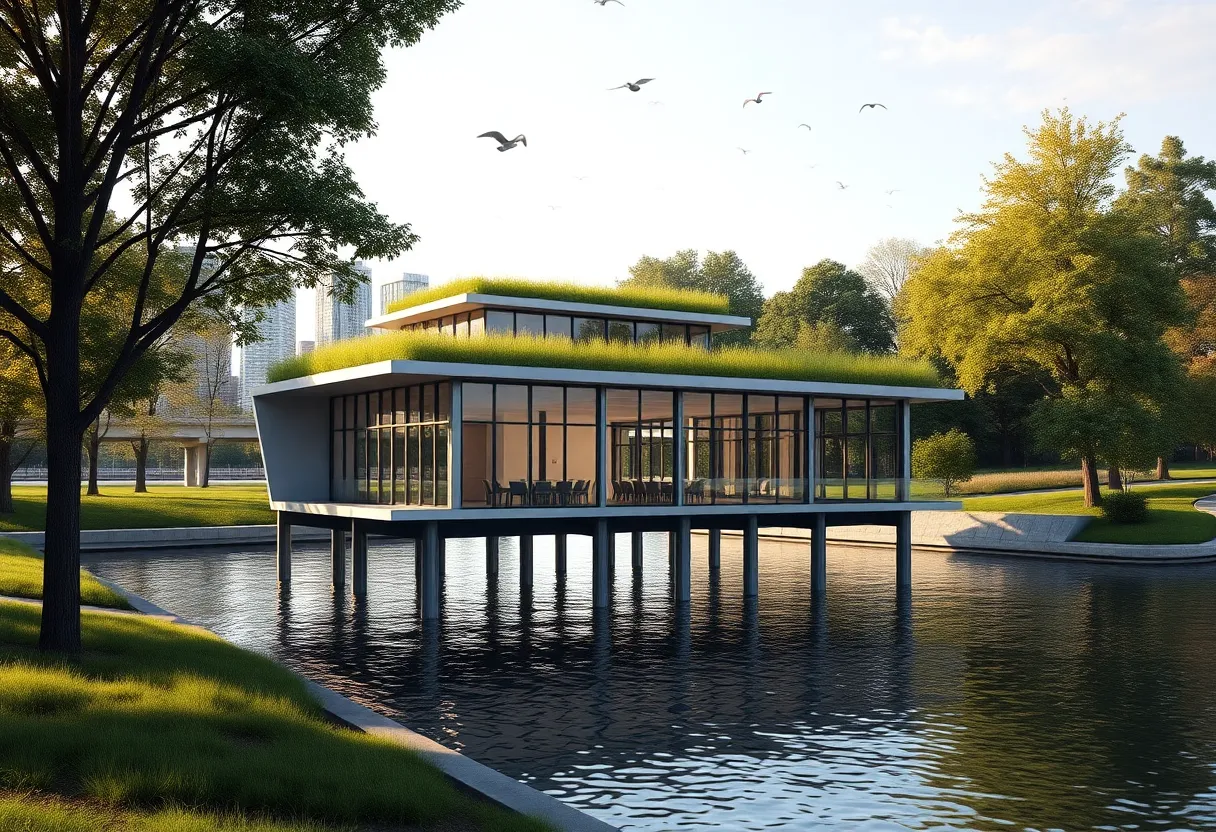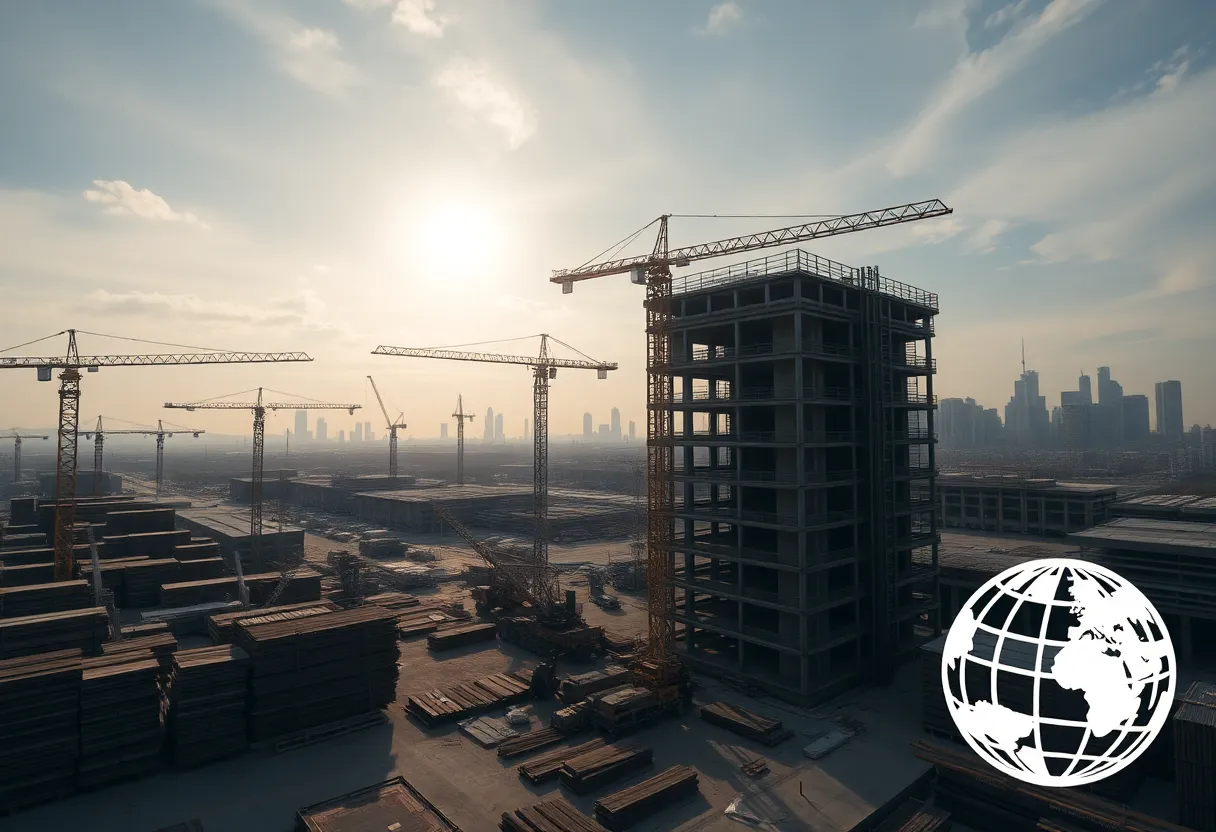79th Street Boat Basin, New York City, August 30, 2025
News Summary
The city design review board has approved a new 3,800‑square‑foot, climate‑resilient dockhouse for the 79th Street Boat Basin as part of a $90 million marina overhaul. The one‑story building will be elevated on nine columns to meet flood‑zone requirements and feature a green roof, low‑luster stainless steel cladding, large corner windows with bird‑safe frit, and an angled plan to frame water views. The approval clears a major design hurdle for a 15‑acre revitalization that includes dredging, dock replacement and expanded environmental education partnerships, while targeting LEED Silver certification and improved long‑term resilience.
City Approves Climate‑Resilient Dockhouse at 79th Street Boat Basin as Part of $90M Revitalization
The New York City Public Design Commission unanimously approved Architecture Research Office’s design for a new climate‑resilient dockhouse at the 79th Street Boat Basin. The approval comes as part of a broader fifteen‑acre revitalization package that includes dredging the basin, replacing docks, and expanding educational partnerships with groups such as the Billion Oyster Project and the Department of Education. The project aims to restore a historic waterfront hub while strengthening its ability to withstand future storms and flooding.
Scope and architectural highlights
The centerpiece is a 3,800‑square‑foot dockhouse designed by Architecture Research Office (ARO) in collaboration with Moffatt & Nichol Engineering with PS&S serving as architect of record. The one‑story structure sits on a grid of nine columns to align with FEMA flood‑zone requirements. A green roof and shading devices help integrate the building into the park landscape, while fenestration features include large corner windows designed with bird‑safe frit patterns to reduce wildlife impact. The exterior uses low‑luster stainless steel cladding intended to reflect water and sunrays. Inside, the compact program provides space for Parks Department staff, storage, and services that support the site’s function as the city’s only year‑round live‑aboard harbor.
Site visibility, landscape integration, and sustainability
From the Henry Hudson Parkway, the dockhouse is designed to be discreet, shielded by topography and mature trees to minimize visual intrusion into Riverside Park. The project emphasizes energy efficiency through shading devices and a green roof, with a LEED Silver target signaling a broader commitment to sustainable design and operation.
Revitalization context and educational partnerships
The dockhouse forms a single piece of a broader fifteen‑acre revitalization initiative aimed at revitalizing the basin through dredging for the first time in decades, replacing docks, and expanding educational partnerships with groups like the Billion Oyster Project and the Department of Education. Demand at the marina remains high, with a 1,000‑person waiting list that underscores the importance of upgraded infrastructure. The revitalization effort also traces its roots to the basin’s historical origins, tying the project to a long legacy of New York maritime culture that began with the 1937 West Side Improvement Project and evolved into a community hub for boaters, kayakers, and social gatherings over the decades.
Historical context, funding, and approval timeline
The city shuttered the marina in 2021 and announced a $90 million overhaul funded in part through collaboration with FEMA. After years of design iterations and public reviews, the Public Design Commission granted unanimous approval in August, signaling a milestone in aligning city agencies, design professionals, and community stakeholders on a resilient path forward for the site.
Design team and project management framework
The project team centers on ARO as the lead designer, with Moffatt & Nichol Engineering handling the structural and civil engineering components and PS&S serving as architect of record. The work requires ongoing coordination among the Principal, the Director, clients, manufacturers, project architects, designers, contractors, and construction managers to meet pre‑determined goals. A dedicated project management role will oversee all client communications, including maintaining a daily log of client projects and timelines, issuing weekly updates, and coordinating the delivery and installation of project components. Subcontractor coordination with the General Contractor will be an ongoing responsibility throughout the construction process to ensure timely and complete submission of documents and materials.
Beyond technical coordination, the project also relies on robust design and budget oversight. The budget will be prepared and maintained in close collaboration with clients and billing departments, and schedules and punch lists will be regularly updated to track progress from conception to completion. The effort underscores a multi‑agency collaboration geared toward delivering a durable, functional, and contextually sensitive waterfront facility.
Frequently Asked Questions
- What is the project at the 79th Street Boat Basin?
- The project centers on a new climate‑resilient dockhouse as part of a $90 million revitalization that includes dredging the basin, replacing docks, and expanding educational partnerships.
- Who designed the dockhouse?
- Architecture Research Office (ARO) designed the dockhouse in collaboration with Moffatt & Nichol Engineering; PS&S serves as architect of record.
- What are the key architectural features?
- The dockhouse measures 3,800 square feet, is elevated on nine columns, includes a green roof, low‑luster stainless steel cladding, large corner windows with fritted patterns for bird safety, and an interior program for staff, storage, and services to support year‑round live‑aboards.
- When was the design approved?
- The design received unanimous approval in August from the Public Design Commission after multiple iterations and public reviews.
- What is the broader scope of revitalization?
- The effort encompasses dredging the basin, replacing docks, and expanding educational partnerships within a fifteen‑acre site, reflecting a broader push to modernize and safeguard the waterfront.
Key features table
| Key Feature | Details |
|---|---|
| Location | 79th Street Boat Basin, Riverside Park, New York City |
| Dockhouse size | 3,800‑square‑foot, one‑story structure |
| Elevation and structure | Elevated on nine columns to meet FEMA flood‑zone requirements |
| Materials and exterior | Low‑luster stainless steel cladding to reflect water and sun |
| Roof and sustainability | Green roof; shading devices; LEED Silver target; energy‑efficient design |
| Fenestration and safety | Large corner windows with frit patterns for bird safety |
| Site integration | Hidden from view from Riverside Park; shielded by topography and mature trees |
| Broader scope | Dredging, dock replacement, and expanded educational partnerships within a fifteen‑acre revitalization |
| Design team | ARO; Moffatt & Nichol Engineering; PS&S (architect of record) |
| Project management | Coordinated effort among Principal, Director, clients, builders, and contractors; includes budgeting, scheduling, and documentation |
Deeper Dive: News & Info About This Topic
Additional Resources
- The Architect’s Newspaper: ARO 79th Street Boat Basin
- Wikipedia: 79th Street Boat Basin
- Business of Home: What Happened at New York’s Design Week
- Google Search: New York Design Week 2025
- Curbed: NYC x Design Week — 12 Chairs, MSCHF, Gaudí, USM
- Google Scholar: flood resilient waterfront design NYC
- Wallpaper: New York Art Exhibitions Guide
- Encyclopedia Britannica: Riverside Park (Manhattan)
- The New York Times: Design & Healthy Living (Aug 29, 2025)
- Google News: 79th Street Boat Basin





